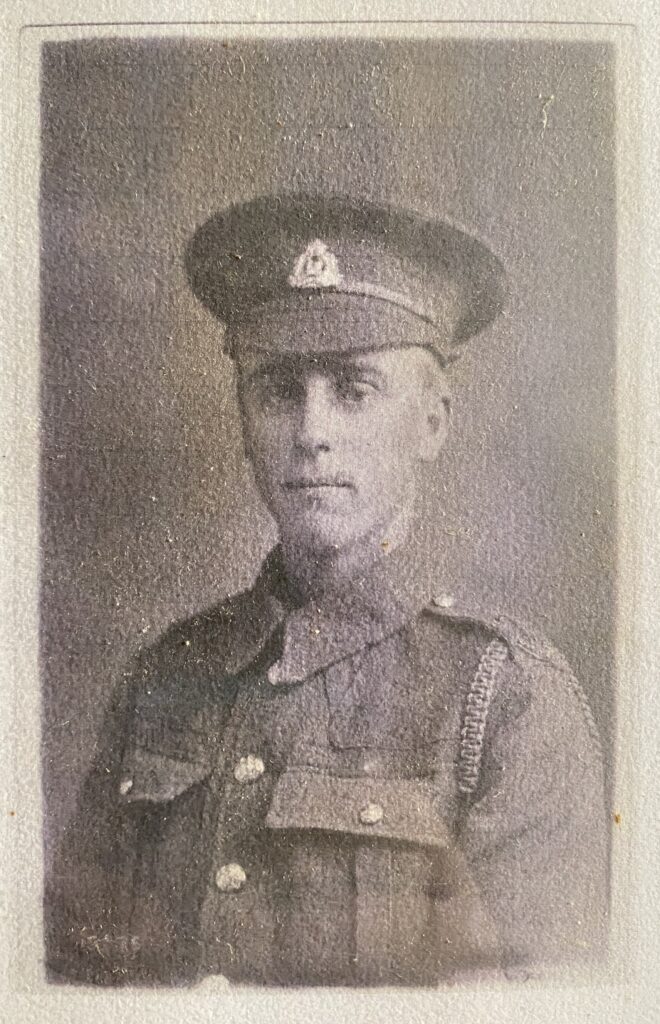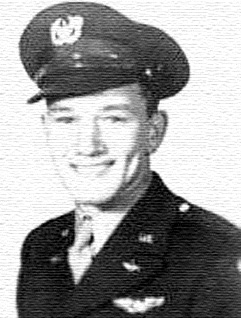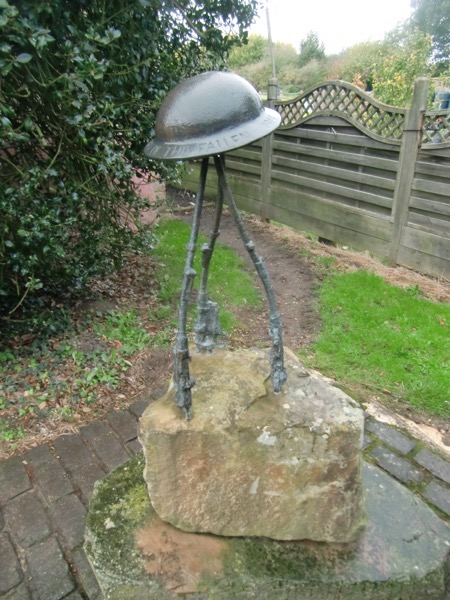
Captain Thomas Bailey
Ox & bucks light infantry
Died 14 Sept 1944 age 29 buried Taukkyan war cemetery Burma. Plot 5, Row K Grave 11.
Captain Reginald Baker
Died in 1920 of wounds in Horningsea. Buried in Horningsea churchyard.
Captain Reginald Cecil Baker is buried in a family grave just to the west of the large Holly tree in the church graveyard. Normally war graves were marked with Portland Stone head markers, but in this case there is only an inscription on a low plinth marking his resting place.
Captain Baker was the son of Alfred Baker and Harriet Baker who resided at the school house attached to the old village school. Harriet was the village school mistress and in 1920 Reginald passed away from the effect of trauma inflicted during the first world war.
It would seem that he joined the Army at the beginning of the war as a volunteer, and was posted to the 1/5 Seaforth highlanders landing in France on the 1st of May 1915 as a private in an infantry battalion.
By the 7th July 1916 he had been promoted Second Lieutenant in the East Surrey Regiment, then Lieutenant on the 7th January 1918 and finally Acting Captain 1st September 1918. In about 1917 he transferred into the new arm of the army known as the Tank Corps. Cecil Baker would have trained in these lumbering” tanks”. Conditions inside were terrible, heat from the engine and guns along with fumes and noise made the inside virtually uninhabitable.
His first big tank action was the battle of Cambrai. Reginald is recorded as being in tank D 10 named “Diana”, part of D battalion which fielded 12 tanks on the 20th November. It is recorded that Diana went into the attack followed by a group of infantry reaching the second objective in front of the village of Flesquieres before his tank became “Ditched” and had to withdraw from the battle. On the 23rd of November Captain Baker is recorded as being in command of D4 “Dryad 11 in the attack on Bourlon wood. It would seem that his tank made the objective deep in the wood.
Later in the war he is recorded as being in tank 2692 in the repelling the German 1918 spring offensive near Peronne, his tank was badly “ditched” and set on fire but not before the tanks ammunition was transferred to tank 8118.
After the war Reginald stayed on in the army but was eventually demobilised in 1919 to take on a new life. It would seem that his health failed as a result of the traumas of the war and he passed away in 1920 while living at the school house.
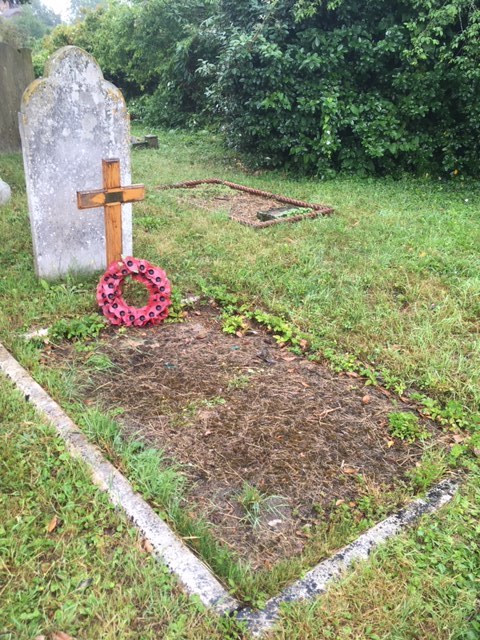
Lance Corp Herbert Cornwell.
Pte 11th bat Suffolk Reg
Died on the first July 1916, the first day of the battle of the Somme aged 25 during the assault through Sausage Valley.
Corporal Cornwell was one of our villagers who joined the 11th (Cambs) Suffolk’s, one of the Pals Battalions raised by Kitchener in his drive to recruit a Million men into the Army.
On the First of July the 11ths Suffolk’s were drawn up behind the “Grimsby Chums” so were in effect the second wave but both the Suffolk’s and Grimsby Chums were decimated as they reached no man’s land. Some did reach their objectives but were cut off. We don’t know at what point Corporal Cornwall lost his life, but his body was recovered and buried behind the battle field in Oviers just behind the jump off trench overlooking Sausage valley.
There were two other village boys who were killed from the village, who joined the 11th Suffolk’s and probably were with Lance Corporal Cornwell at the battle of the Somme .
He is buried in Ovillers cemetery.
Pte George Ellis
11th Bat Suffolk Reg
Died on 8th August 1916 during the battle of the Somme aged 20 and buried in Daours cemetery.
George Ellis was one of our three villagers who joined the 11th (Cambs) Suffolk’s, one of the Pals Battalions raised by Kitchener in his drive to recruit a Million men into the Army. As he is buried well behind the lines he would have been taken back to a hospital behind the lines having been wounded. Lived at Clayhithe, Horningsea.
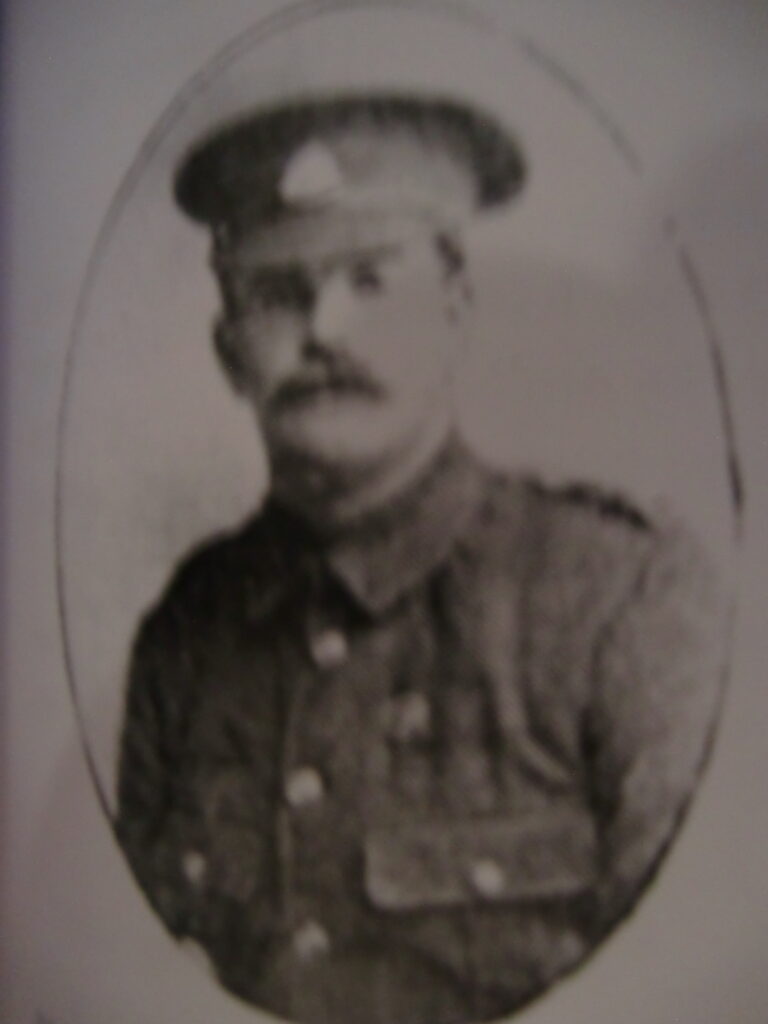
Pt John Heath
2nd bat Royal Fusiliers
Died on the twenty sixth October 1917 aged 29 and commemorated on the Tyne Cott memorial. No known grave. This was nearly at the end of the battle of Passchendaele celebrated on its 100th anniversary this year.
Lance Corp Sam Holmes
7th Bat Canadian Expeditionary force
Died on second of July 1917 as a prisoner. Buried Cologne Southern Cemetery, Germany.
Son of Mrs Holmes of High Street Horningsea.
Pte W. Jeffs
1st Bt Bedfordshire Reg
Died 7th May 1916 aged 22. Buried Faubourg Military cemetery.
Pte Harry Newman
7th Batt Suffolk Regiment
Died twenty third of December 1915 age 25 buried in the Guards Cemetery, Windy corner Cuinch.
Harry Newman is buried in the Guards cemetery Windy Corner Cuinchy. This was a notorious area of the western front where the fighting was conducted in brick yards rather like a large builders merchants yard. The stacks of bricks were hollowed out and both sides fought for many months without ever moving.
His photo is in the village hall along with the rest of the Village Cricket team
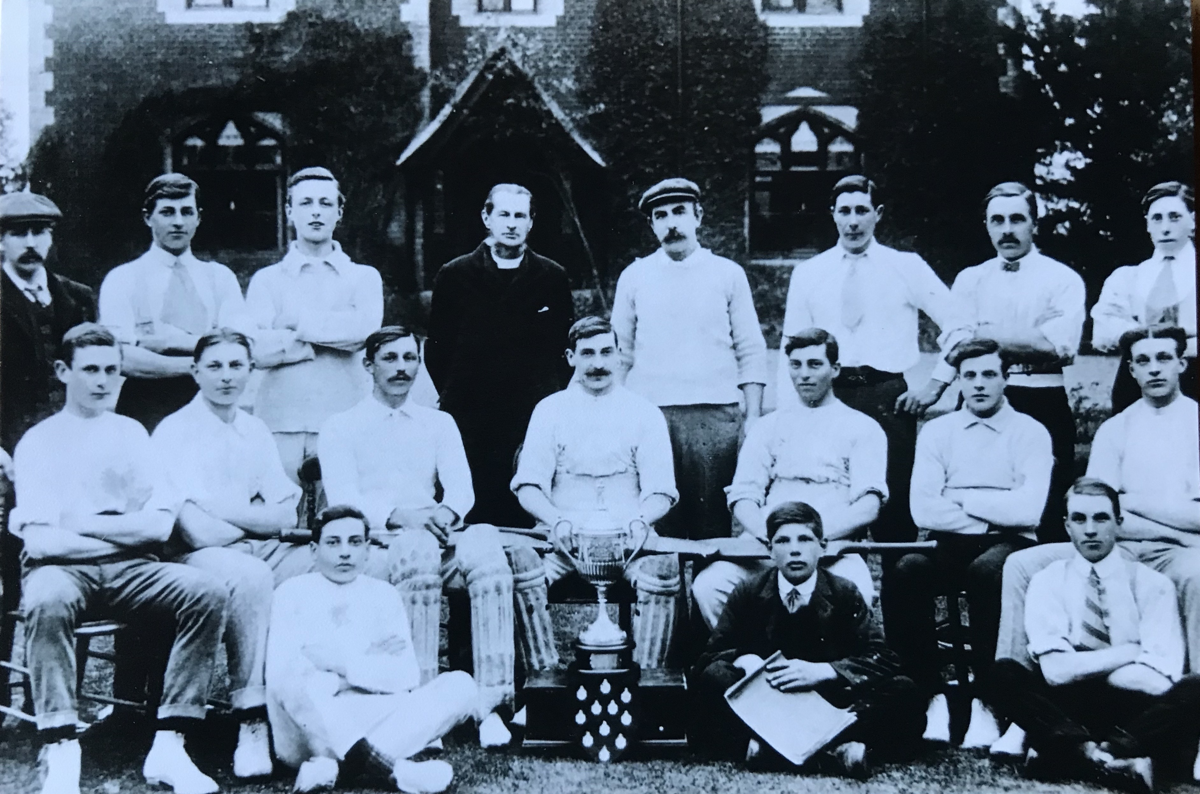
Pte Jacob Payne
1st Bat, Suffolk Reg
Died 28th May 1940 age 27 at Dunkirk.
Brother of Maud Hart village postmistress. Son of Walter and Esther Daisy Payne. Husband of Dorothy Louise Payne of Bury St Edmunds. Commemorated on the Dunkirk memorial. Grave ref 46.
Lance Bombardier Walter Douglas Peacock
Field Regiment Royal Artillery
Died 27th February 1946. Buried in Phaleron war cemetery, Greece Plot 20 Row E Grave 13.
Son of Jacob and Louise Ann Peacock of Great Chesterford. Cousin of Maud Hart.
Pte Thomas Pettit
7th Bat Bedfordshire Reg
Died tenth August 1917 aged 29 and buried in Hooge Crater cemetery Ypres
He died at the start of the battle of Passchendaele.
Pte Wilfred Pettit
C company 11th Bat Suffolk Reg
Died on twenty eighth of April 1917 age 21 Son of Uriah and Florence Pettit of St Johns Lane Horningsea commemorated on the Arras memorial. No known grave.
He is remembered on the Arras war memorial as having no known grave and is pictured in the photograph in the village hall along with Private Harry Newman of the 7th Batt Suffolk regiment. Wilfred lived with his parents in one of the cottages now on the site of Dallas in St Johns Lane
Pte Edgar Sharpe
1st/6th Bat Northumberland Fusiliers
Died 28th March 1918 and commemorated on the Poziers memorial, Somme, France. No known grave.
Pte Walter Heath
12/13 .Bn0 Royal Northumberland Fusiliers
Died twenty fifth September 1918 aged 41. Buried at Cross roads cemetery Northern France.
Captain James M. Farmer
USAF
Died on 14th July 1944. Buried in Maddingley Cemetery, Cambridge.
Captain James M Farmer died on 14th July 1944 when his P51 Mustang fighter crashed in Quy Fen one mile from the village. He was based at Duxford.
Ron Meakins and Russel Allgood from the village who were working in the field went to his aid but he sadly died as a result of his injuries, when his parachute failed to open properly. He is buried at Maddingley Cemetry, Cambridge (HonorStates.org, American Air Museum in Britain)
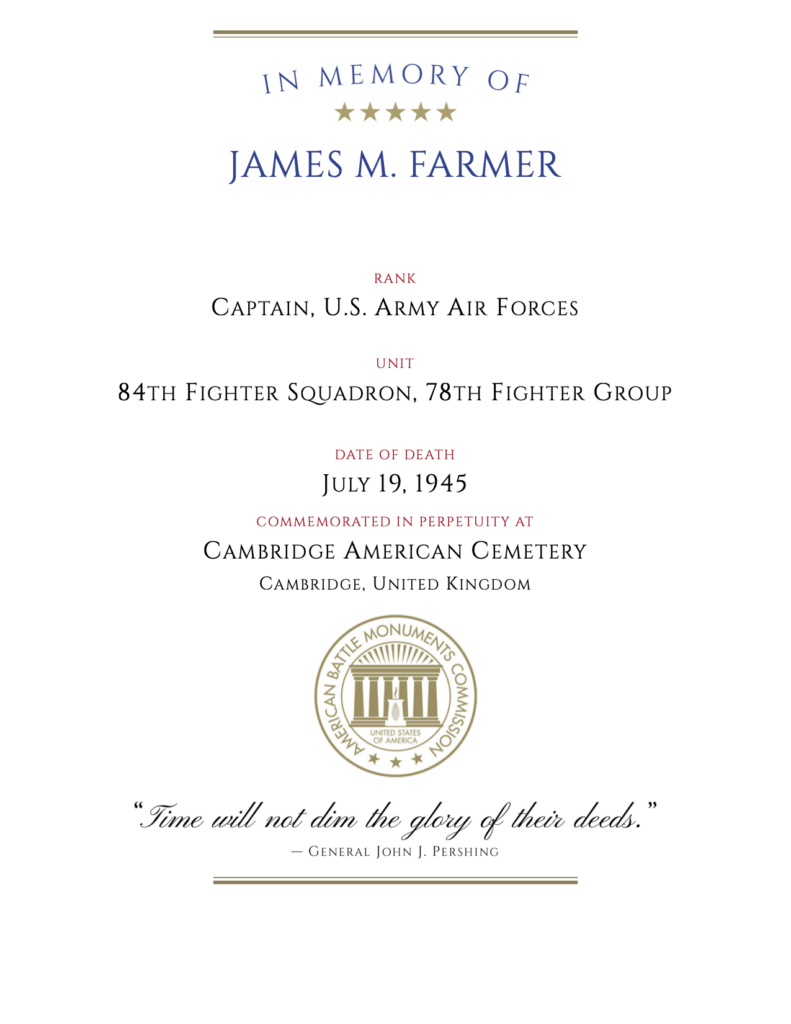
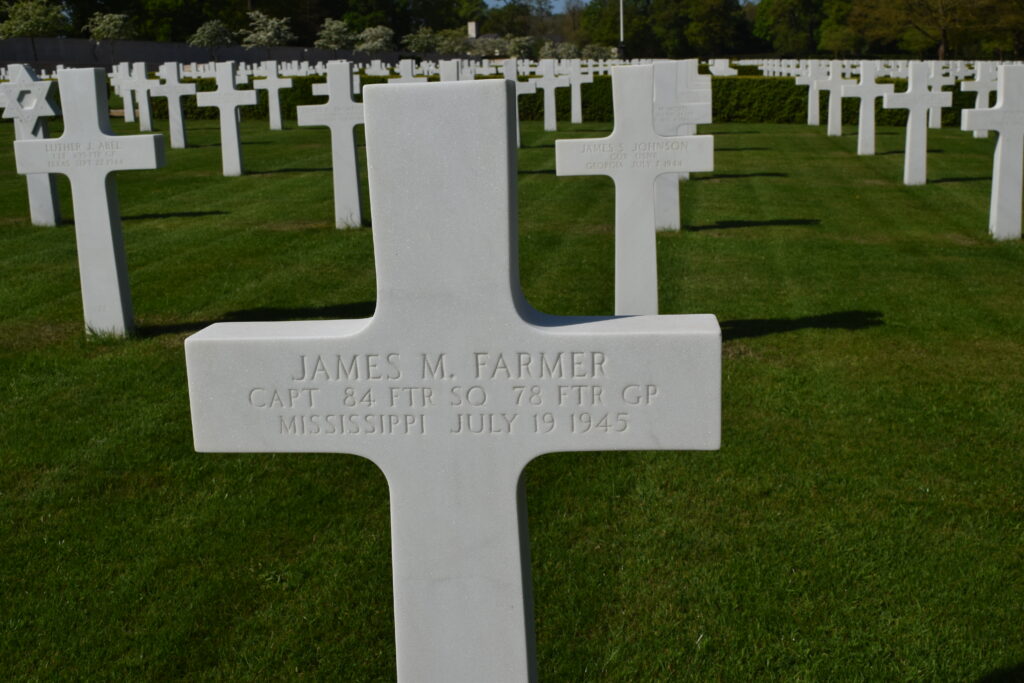
With the exception of Pte Peacock, each grave or memorial has been visited and a rose bush from the village has been planted on or nearby their resting place.
The Village War Memorial
John Wilson
Driving through the villages and towns throughout the United Kingdom you cannot help to notice the many war memorials standing in prominent places. Many are of Portland stone and include the bronze cross of sacrifice and inscribed with the names of the fallen over the last century.
Horningsea seemed to have a different approach to a memorial. The first was erected in the church and consisted of a wooden board with all the names of those who served In the First World war, along with the small Red Cross marking those who had lost their lives.
In the 90s a photographic record was made of the resting places or in some cases because they had no known grave, the memorial they are remembered on and a rose planted on each grave or near each memorial panel. This is decorated with poppies gathered in the Albert Hall remembrance service in the 1970s.
Another small memorial was nailed to the fence of the playground to commemorate Goose Green, a prominent turning point in the Falklands war. The playground is now registered as Goose Green on official documents. About this time a tree was planted in the Horningsea Road graveyard by the late Mrs Lewin to mark the anniversary of the end of World War Two.
Horningsea still did not have a proper war memorial until the Jubilee garden was created, so at this point a memorial was commissioned and bronze castings were made from a rifle and helmet found in a wood on the Somme battlefield, so we had our own unique memorial made by the village sculpturer Mathew Sanderson. The helmet was laying in undergrowth in a small wood known as the Poodles near La Boisle, where it had laid undisturbed since the battle. The rifle was lying in a field in which was then known as “Sausage Valley” having been brought to the surface by ploughing, not far from where Corporal Cornwell fell on the first of July 1916.
In 2015 a tree was planted to mark the 70th anniversary of the end of the Second World War by Margaret Dorrington and Oswald Brown, the last two survivors who had served in the conflict. Finally in 2014 the first tree was planted at the back of the village green, followed by four more over the next years until 2018 , marking the centenary of those turbulent years of the First World War.
So Horningsea may have not followed the convention of other towns and villages but if you know where to look you will find that this village has remembered them.
Pals Battalions
Pals battalions were a very clever way of recruiting men. The idea being that likeminded groups joined up together. Miners, artists, millworkers and farm labourers and many other groups would join up on block, often with their management structure taking on their equivalent military rolls. The sad outcome of such a clever scheme was when the pals battalions went into action on the first day of the Somme battle was that whole streets of towns and villages receive notifications all together of the tragic loss of 60,000 men and the devastation it caused. The 11th Suffolk’s were recruited from the villages around Cambridgeshire and Newmarket, often with the aid of the “Ladies Recruiting Committees”, one being strong in representing Waterbeach. These committees urged mothers to send their sons into the army. Although they did a lot of good work providing comforts to the troops, they were also behind the notorious “White Feather Club” which was designed to shame young men into joining up even if they were in reserve occupations.
There are three known villagers who were in the 11th Suffolk’s Pals Battalions – Lance Corporal Cornwell, George Ellis and Pte WIlfred Charles Pettit. However, it is quite possible that many of those listed on the memorial in the village church to those who had served were also in the 11th Suffolk.

